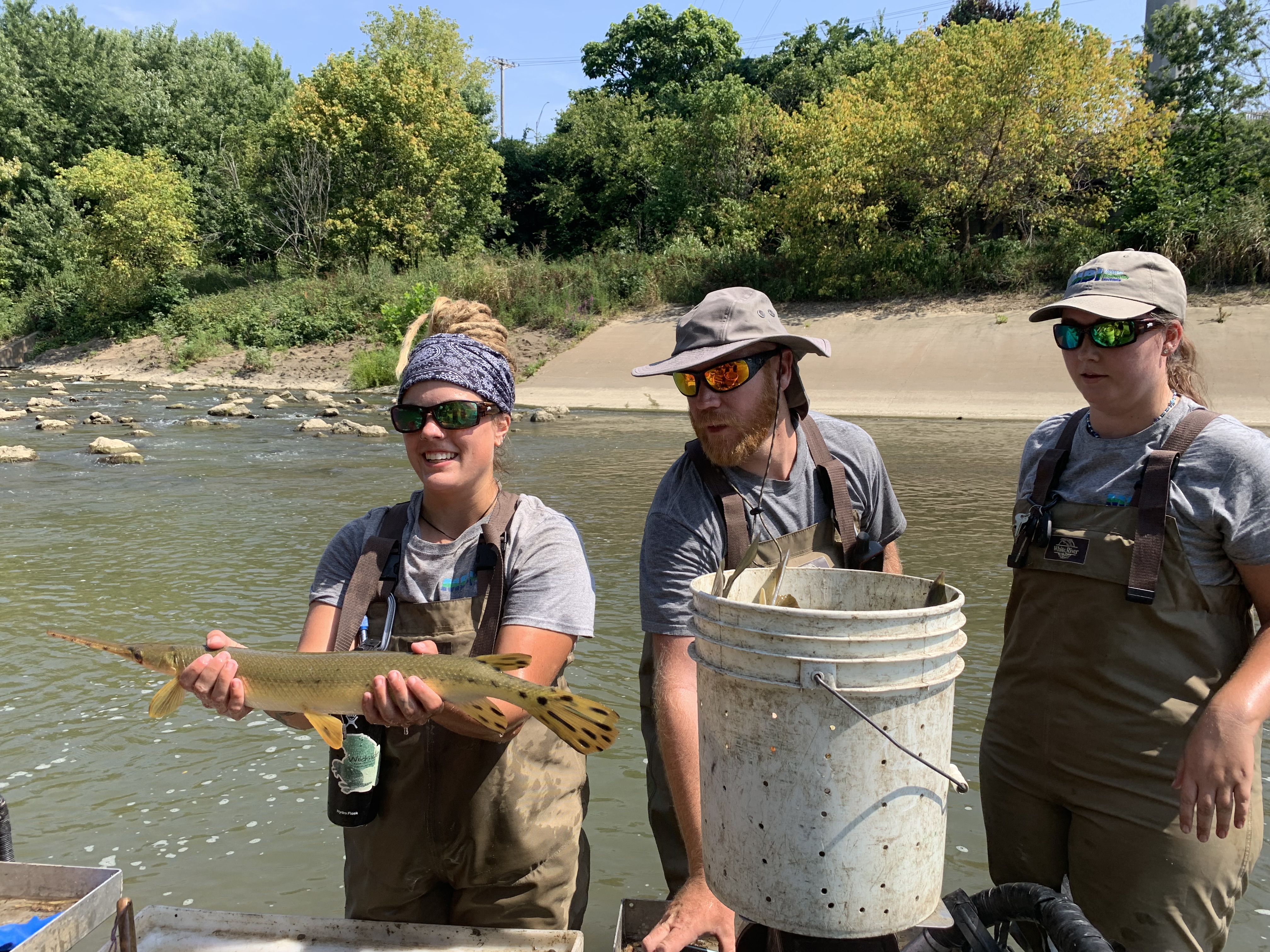Water Quality Monitoring Program
Water quality is at the heart of what MSD does every day.
WATER QUALITY STORY MAP
Visit our interactive Water Quality Story Map to learn more about MSD's water quality program in a visual format.
MSD WATER QUALITY STUDIES
MSD monitors water quality and aquatic habit in the Mill Creek, Little Miami River, and Muddy Creek & other tributaries. MSD partners with the Midwest Biodiversity Institute (MBI) to perform comprehensive biological, chemical, and physical sampling and analysis in sampling rounds every four or five years. The results are then compared to previous studies and Ohio Water Quality Standards
The most recent (third round) of water quality sampling was conducted in 2021-2023.
- Lower Mill Creek (2023)
- Mill Creek (2021)
- Little Miami River (2022)
- Muddy Creek and other tributaries (2023)
The second round of sampling was conducted in 2016-2019:
The benchmarking (baseline) round of sampling was conducted in 2011-2014:
- Mill Creek (2011)
- Little Miami River (2012)
- Great Miami River (2013)
- Ohio River and Tributaries, including Muddy Creek (2014)
For more information about our local streams, please see our stream-specific webpages below.

HABITAT MITIGATION
The health of local streams isn’t just dependent on what's in the water; it's also important for fish and other aquatic organisms to have a natural habitat.
Toward that goal, MSD and the MILL CREEK ALLIANCE are working to eliminate low-head dams on the Mill Creek mainstem. LEARN MORE

HIGHLIGHT: MUDDY CREEK AND OTHER WEST-SIDE TRIBUTARIES

On December 11, 2024, MSD hosted a public forum on water quality in Muddy Creek and other west-side tributaries.
The forum covered the results of a 2023 biological and water quality study (bioassessment) of the Indian Creek, Muddy Creek, Rapid Run, and Taylor Creek tributaries of the Ohio River commissioned by MSD and performed by the Midwest Biodiversity Institute (MBI).
The results show that 71% of this area is not in attainment with its aquatic life use. The main impairments are chlorides and habitat.
The study also shows widespread impairment of E. coli throughout the area. Sources of E. coli include combined sewer overflows (CSOs), home sewage treatment systems, and animal waste.


